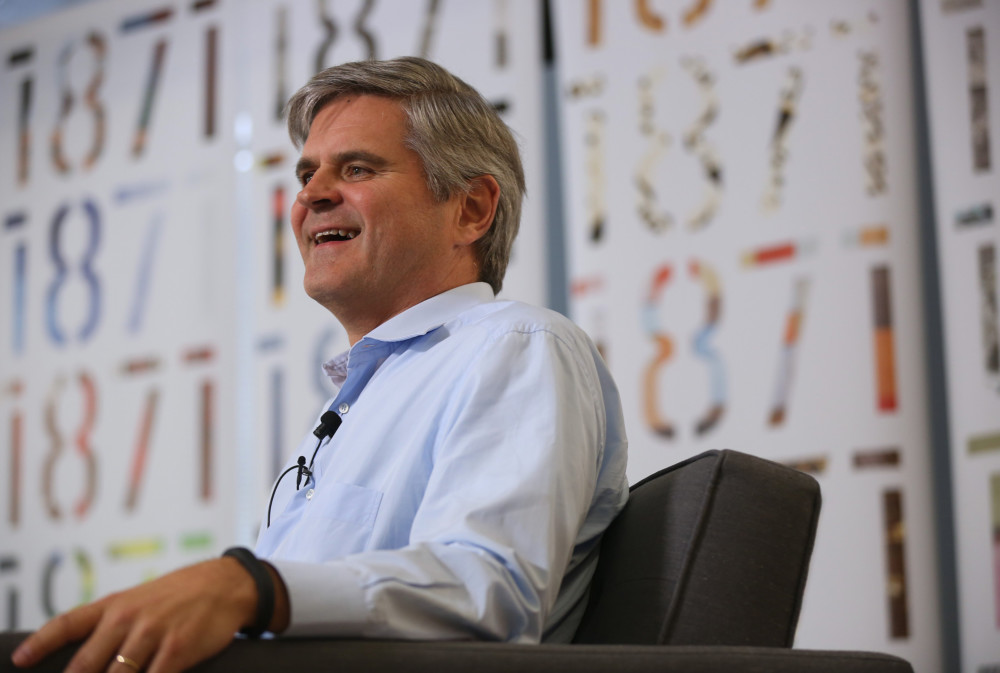OPINION
By David D. Haynes
Milwaukee Journal Sentinel
WWR Article Summary (tl;dr) In Steve Case’s new book, “The Third Wave: An Entrepreneur’s Vision of the Future,” the AOL founder foresees a new round of innovation — the Internet of Everything — in which the web is an organic part of every product. He’s predicting this could be great news for some struggling American cities like Detroit, Cincinnati and Buffalo
Milwaukee Journal Sentinel
There is no bigger evangelist for entrepreneurs right now than Steve Case.
Present at the birth of the Internet as a founder of America Online, he’s now the top dog at Revolution, an investment firm in Washington, D.C., that is plowing money into start-ups from coast to coast. Since 2014, he’s taken his “Rise of the Rest” bus tour to cities across the country.
Why go to Cincinnati, Detroit, Pittsburgh or Buffalo? Because Case believes that’s where the next big things are likely to happen.
If he’s right, it’s very good news for the lands that the venture capitalists forgot.
So far, the data don’t necessarily support the Case thesis. Money is still flowing mainly to traditional tech hubs — Silicon Valley, New York and Massachusetts, Case acknowledges. Last year, half of it went to companies in the Bay Area alone, way up from 20 years ago, The Wall Street Journal reports.
But Case believes that is about to change. He sees the signs in companies such as Detroit’s Shinola, a maker of handcrafted watches, bicycles and handbags that makes its watches in the former home of General Motors research labs in the Motor City. Case is an investor. Or in the recent success of American Underground, an entrepreneurial hub in Durham, N.C. And if his bus ever rolls into Milwaukee, he’d see it here at the business accelerator gener8tor.
Case’s new book, “The Third Wave: An Entrepreneur’s Vision of the Future,” is a riff off futurist Alvin Toffler’s 1980 book of the same name that Case read while in college. Toffler foresaw the information age. Case foresees a new round of innovation — the Internet of Everything — in which the web is an organic part of every product. He sees an Internet fully integrated into everything we do. Health care, education, manufacturing, food production and other whole industries are going to be disrupted, Case predicts.
But the very nature of the change should mean more opportunities outside traditional tech belts for smart entrepreneurs who can navigate change and form the right partnerships.
Third wave products “will be tech-enabled, they won’t be tech-centric,” he writes. “They’ll use apps, but the product won’t be an app. And so the benefit derived from being surrounded by the tech world won’t be as high….
“It may make sense, for example, for a company that wants to revolutionize the agricultural industry to settle in the Midwest, where the right supply chains already exist and the culture of farmers is best understood.”
Zach Brandon, president of the Greater Madison Chamber of Commerce, says Wisconsin should be ready to catch the wave.
“The third wave is not a guarantee; the third wave is an insight of where the economy is going,” he said. “But the undertow of the third wave is scary. If, in fact, Case is right and the industries that he identifies…are about to change significantly based on this concept of the third wave — and we’re not riding that wave — we’re in trouble.”
Brandon sees opportunity in Wisconsin’s “health highway” — the nearly 100 companies clustered between Madison and Milwaukee that focus on health care. And he sees it in software publishing. Madison has the second-highest density of software publishing jobs in the country, Brandon says, and when combined with Milwaukee, the state has 3.8% of the country’s software publishing jobs.
buy orlistat online www.parkviewortho.com/wp-content/languages/new/prescription/orlistat.html no prescription
That’s nearly equal to Wisconsin’s share of ag jobs and more than its share of manufacturing jobs.
“We talk about these 68 miles (between Madison and Milwaukee); that’s an hour in the car,” Brandon said. “There are some cities on the West Coast where it takes you an hour to get from one side of the city to the other. We need to be selling this corridor.”
Maybe it’s finally time for “the rest” to have their day.














































































































































































































































































































































































